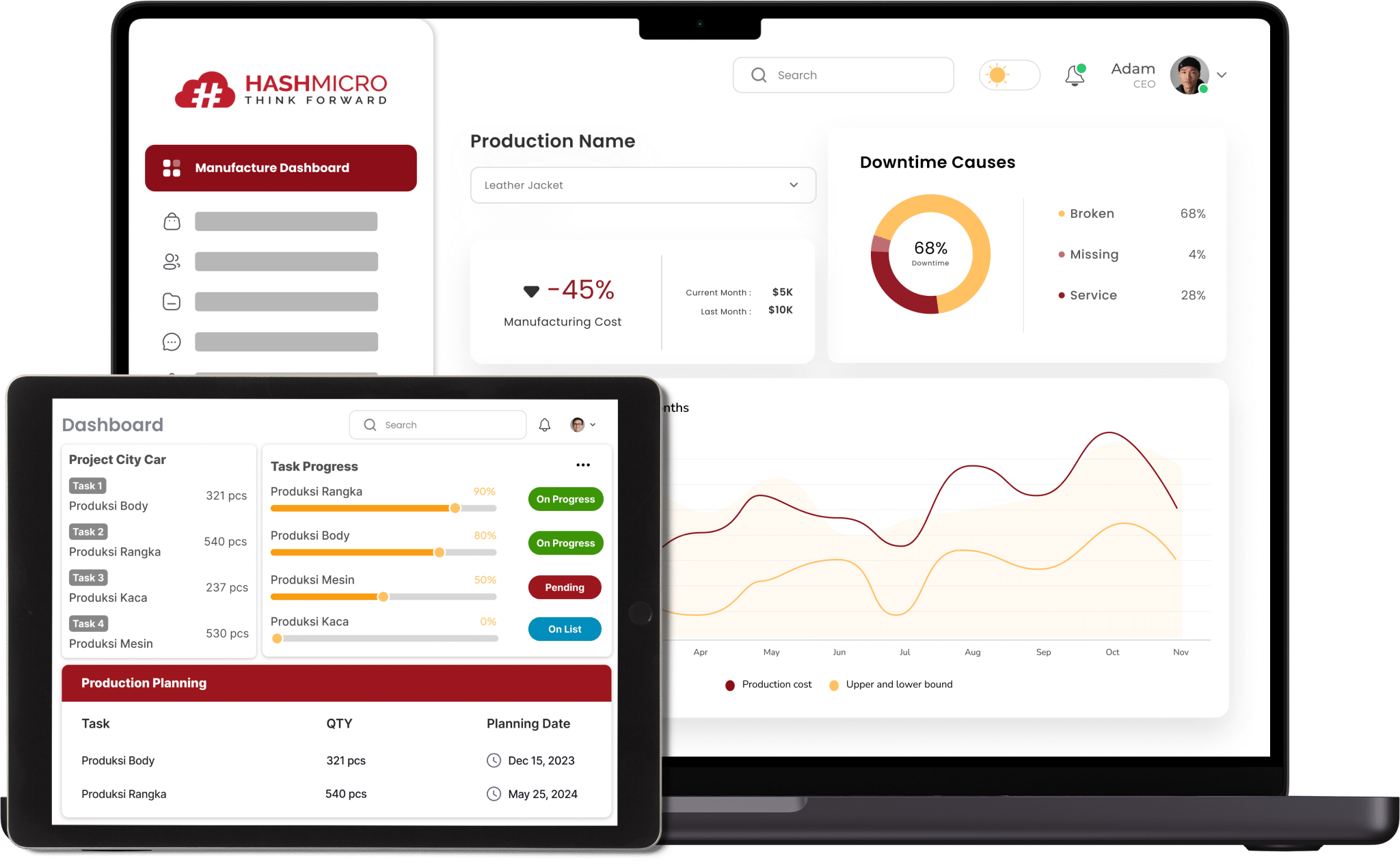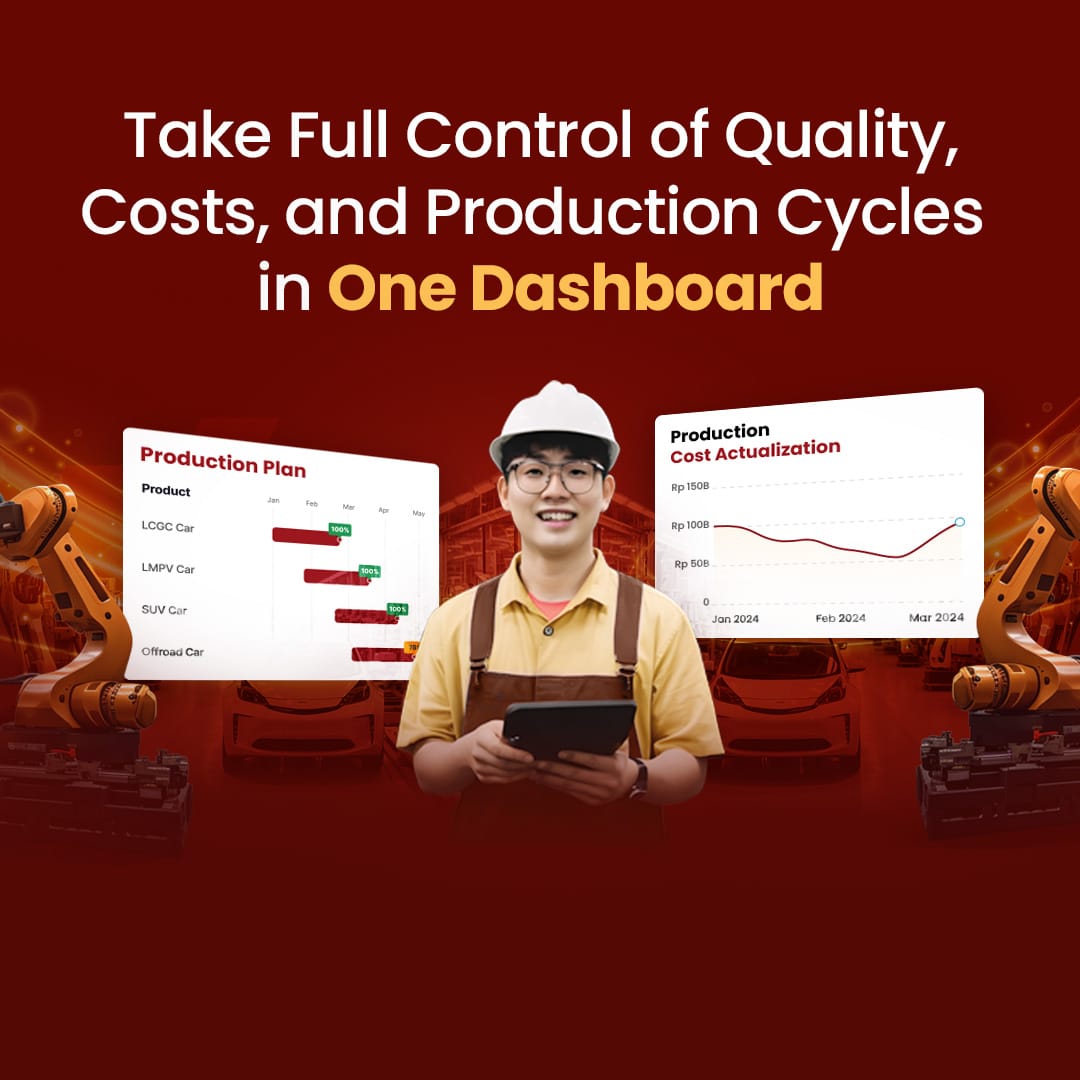When it comes to bookkeeping and accounting, one of the most important things to remember is maintaining track of expenses. In a manufacturing business, some operational fees and taxes affect production costs indirectly, which is called the manufacturing overhead cost.
High production costs are frequently a barrier for businesses, and they often occur when the production process is not optimal. Therefore, companies can use manufacturing software to simplify their production process and cut production costs. This article will go through the many types of manufacturing overhead and how to cut them down to ensure efficiency.
Key Takeaways
|

Table of Content:
Table of Content
What is Manufacturing Overhead?
Manufacturing overhead is an expense that indirectly correlates to a facility’s production. This indirect cost is often called factory overhead, production overhead, or factory burden. On the other hand, the manufacturing cost is the direct cost of goods.
Natural materials and direct labor are the two components of manufacturing costs. Specifically, direct material costs include the raw materials to produce goods, while direct labor costs are the wages of the labor directly involved in production.
A manufacturing industry surely involves various production components when producing goods. Other than the direct costs, there are also indirect costs, such as factory rent, utilities, general maintenance expenses, and indirect labor.
These are a few examples of manufacturing overhead costs. While we can add direct material costs directly to the total manufacturing cost, we have to assign direct labor and factory overhead costs to products to determine total work hours and machine time.
Different Types of Manufacturing Overhead
Manufacturing overhead is part of the COGS (cost of the goods sold). Because it will fluctuate as activities change, it is a variable expense. When sales increase, manufacturing overhead usually increases in unison with the cost of production.
Likewise, when sales fall, manufacturing overhead falls as well. Manufacturers divide their overhead expenses in various ways, including direct employee hours and machine hours. There are three types of overhead costs, namely:
1. Fixed
As the name implies, these expenses do not differ from month to month. Furthermore, these costs remain the same regardless of a company’s activity. In other words, companies cannot avoid fixed costs. The most common examples of these costs are rent, mortgage, lease, specific salaries, insurance, and interest payments.
2. Variable
Variable costs increase and decrease with a company’s production volume. These lists include some operational utilities, such as electric, gas, and trash management. As a result, this outcome can also influence shipping costs, maintenance difficulties, legal fees, and promotion. Calculating variable expenses can be done by multiplying the quantity of output by the variable price per unit. Additionally, variable costs differ for each industry.
3. Semi-variable
The items in this list might change over time along with the increasing or decreasing business activity. In other words, business activities may be the determining factor for the initial costs, but over time, these costs may increase or decrease as a company’s activities change. Some examples of semi-variable costs are operational utilities, rent, and insurance.
Examples of Manufacturing Overhead
To have a clearer view of manufacturing overhead costs, here are some common examples of them that a company may have in their daily operational activities.
- Gas and electricities in a factory
- Water, trash, and other services
- Unexpected repairs or maintenance
- Salaries for factory supervisors or managers
- Taxes and insurance
- Building and factory equipment depreciation
- General operational supplies
- Interest expenses on loans for the purpose of purchasing machinery or equipment
Seven Ways to Reduce Your Manufacturing Overhead
As the economy continues to be more stable, there’s no way of knowing where the manufacturing industry, and many others, will end up, making measures for lowering overhead manufacturing costs even more important than they are now.
Of course, cutting manufacturing overhead expenses is vital even when production is doing well. Here are some ways to reduce your manufacturing overhead costs.
1. Build strong relationships with vendors
In production, relationships between vendors and businesses are valuable. Vendors sometimes offer discounts or special contracts to loyal and valued customers. Consider becoming a loyal patron of a few chosen vendors to express your support and gratitude for their assistance in making your production possible.
Additionally, don’t hesitate to communicate your overhead reduction goals with your vendors. This way, you can see if they have any bulk options for materials that you need for your production processes. Frequently, buying in bulk can save you money.
2. Perform preventative maintenance
You need to ensure all your equipment operates efficiently by keeping them up to date. As a result, your productions will run smoothly, and equipment will last longer. Preventative maintenance can help you save money on things like repairs and replacements.
Adding lubricants and cleaning a machine may seem insignificant at first, but it can help you avoid replacing equipment due to neglect or overuse.
3. Communicate overhead reduction goals with employees
You can create particular cost-cutting goals according to your budget. These can assist you in establishing team goals that help you achieve that reduction. Of course, you cannot accomplish this alone.
Therefore, you need to consider discussing these goals with your employees and brainstorm ways to reduce production costs. Since your employees are the ones who operate the equipment and perform manufacturing labor, they might give you many insights on how to reduce overhead costs in manufacturing.
Other than that, you can also evaluate your employees to see if any individual or team problems affect production efficiencies.
4. Automation
Many things are now possible thanks to technological advancements. You can utilize this to automate your manufacturing processes. Automation with manufacturing software enables you to assist employees with repetitive tasks that take up a lot of time.
Furthermore, you can choose the automation that suits your production best, whether collaborative robots or a couple of machines with IoT sensors. Either way, make sure to not go over your budget. With the right automation technology, you can save on labor costs.
5. Accurate inventory management
Improving the visibility of available material or product stocks can help you decrease the waste of inventory and raw materials, which leads to manufacturing cost reduction. With this inventory management, you can immediately log the list in and out of your system.
Many inventory management software even provide a mobile app to keep track of your warehouse stocks easier. As a result, employees across the factory floor, in the back office, or even those working from home, can receive a real-time update of materials and goods available. Thus, you will make decisions regarding restocking supplies easier.
6. Hire an in-house maintenance professional
An in-house maintenance professional can perform routine inspections, preventative maintenance, and minor repairs to your equipment. This hiring selection could save money on unforeseen repair charges or work fees for a third-party repair company.
If your equipment breaks after business hours, having an on-site worker who can also do emergency repairs could save you money on overtime or other charges.
7. Cutting manufacturing overhead costs with a value stream map
A value stream map depicts the whole manufacturing process at your site. You can look at everything here, from raw material purchase through client delivery, giving you a complete picture of every step necessary to create a profit.
Hence, every approach to reducing manufacturing overhead costs begins with a well-defined value stream map. Lean manufacturing, or the process of cutting away all wasted time, staff, and work, is essential to make a profit.
Related article: 6 Manufacturing Industry Trends in 2022 that You Must Know to Stay Competitive
Best Solution Software to Lower Manufacturing Overhead Cost
Manufacturing overhead costs come in many forms, and we honestly cannot predict when and how they will occur in each industry. Thus, all of the suggestions for lowering the production overhead may vary for every industry.
However, all those strategies require the same things: a complete grasp of your supply chain, as well as automation software. Here are several manufacturing solutions that you can choose from.
1. HashMicro
HashMicro is a cloud ERP software that allows you to automate all parts of your business and enable firms to modify their ERP modules. Therefore, this software is suitable for many types of industries. Manufacturing, finance, trading, food and beverage, retail, transportation, and other industries can benefit from this solution.
In today’s fast-paced manufacturing world, efficiency and cost management are key to success. That’s where HashMicro steps in – your ultimate solution for reducing overhead costs without compromising on quality or productivity. Here’s how HashMicro makes it happen:
- Streamlined Inventory Management: HashMicro’s advanced inventory management system is a game-changer. It allows for real-time tracking of stock levels, ensuring that you never run into overstocking or understocking issues. This precision helps in reducing holding costs and improves cash flow.
- Automated Workflow Processes: Say goodbye to manual processes that are time-consuming and prone to errors. HashMicro automates your workflow, ensuring seamless operations from order processing to delivery. This automation not only speeds up processes but also reduces the likelihood of costly mistakes.
- Integrated Supply Chain Management: HashMicro understands the complexities of supply chains. Our integrated supply chain management feature allows for better coordination with suppliers, leading to optimized procurement costs and improved relationships with suppliers.
- Detailed Analytics and Reporting: Knowledge is power, and HashMicro provides it by offering in-depth analytics and reporting features. This empowers you to make informed decisions, helping to cut unnecessary costs and focus on areas that need attention.
- Customizable Modules: Every business is unique, and HashMicro caters to this. Our customizable modules mean you can tailor the software to your specific needs, ensuring you’re not paying for features you don’t use.
- Enhanced Quality Control: With HashMicro, maintaining high-quality standards becomes easier. Our quality control module helps in identifying and addressing issues early, reducing the cost associated with defects and reworks.
- Energy Consumption Monitoring: A unique feature of HashMicro is its ability to monitor energy consumption. By keeping an eye on energy usage, you can implement strategies to reduce consumption, thereby lowering utility bills.
- Maintenance Management: Regular maintenance is key to avoiding costly breakdowns. HashMicro’s maintenance management feature schedules and tracks maintenance activities, ensuring your equipment is always in top shape.
- Compliance Management: Staying compliant with industry standards and regulations is essential. HashMicro helps in managing compliance-related tasks, reducing the risk of fines and legal issues.
- Scalability: As your business grows, so do your needs. HashMicro is designed to scale with you, ensuring that you always have a software solution that fits your evolving requirements.
In summary, HashMicro isn’t just software; it’s a comprehensive tool that propels your manufacturing business toward higher efficiency and lower overhead costs. Embrace the power of HashMicro and take your manufacturing operations to the next level!
2. Syspro
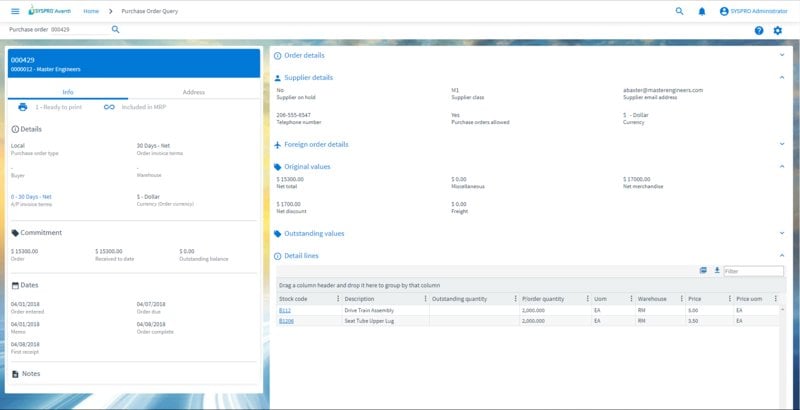
Syspro is an ERP software that will benefit manufacturers and distributors. Industry can install Syspro’s features on any device, and it also provides implementation through the cloud, on-premise, or in a hybrid architecture.
This Tier III provider also provides a modular system that enables the installation of new modules as the company expands. Furthermore, Syspro’s solution includes accounting, inventory management, supply chain management, warehouse management, production management, CRM, and manufacturing operations management.
3. Odoo
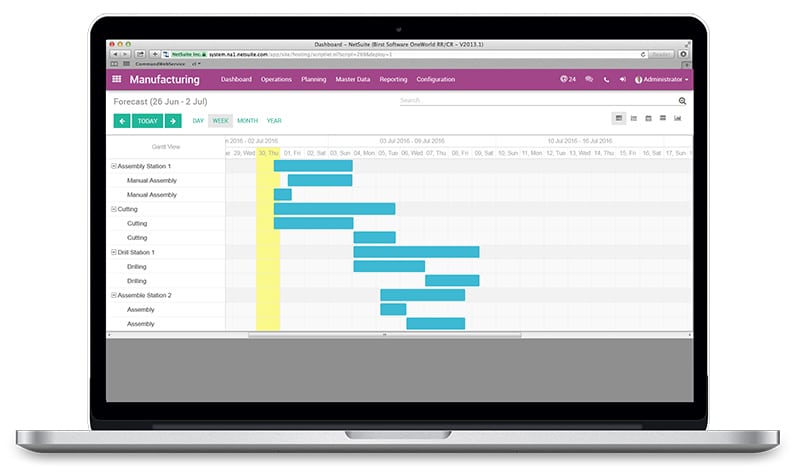
Odoo is a cloud-based ERP system that includes customization, implementation, integration, and training, among other things. This software runs on open source and provides solutions for site builders, online retailers, POS, CRM, and sales applications.
Odoo features a well-defined Manufacturing management module that gives you comprehensive control and a 360-degree view of the various phases of the manufacturing process thanks to its specialized modular infrastructure.
Furthermore, Odoo has specific operational tools that will assist in the planning, execution, and quality control of the production process before sending it out to warehouses or customers.
4. MRPeasy
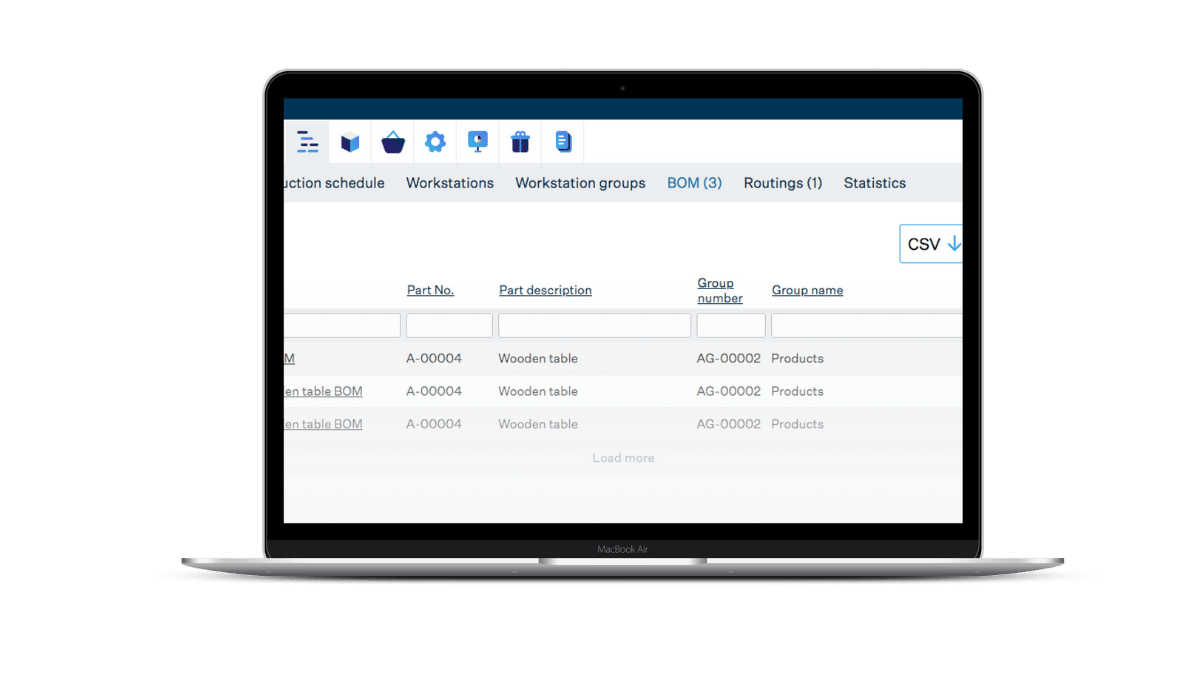
MRPeasy is a cloud ERP software that focuses on the small manufacturing industry. This solution combines sales, materials planning, shop floor reporting, production scheduling, inventory management, and procurement into one place.
Besides, MRPeasy reduces inventory levels and stock-outs by saving data collection and planning time. It also assists in providing predictions of profitability and lead times. As a result, your company’s efficiency will increase.
Related article: What is Manufacturing Software & How It Can Help Your Business Grow?
Conclusion
The manufacturing industry will always continue to grow. With this being said, production activities will also evolve. As a result, manufacturing overhead costs are a part of the industry, and you cannot predict how much it will be.
But, you don’t need to worry about it as there are many ways to lower manufacturing overhead costs. One of them is implementing HashMicro manufacturing software automation to save energy, time, and cost. For additional information on setting up your business with this solution, experience the free demo right now, and seize the opportunity today!








